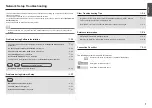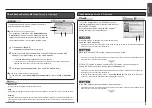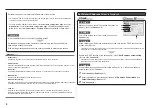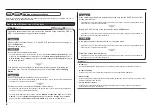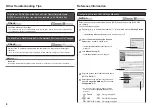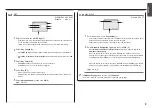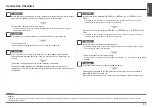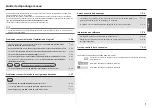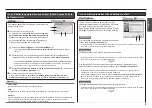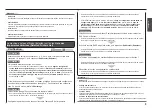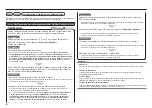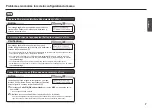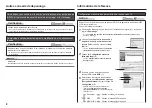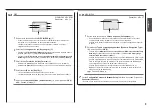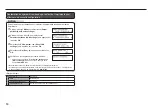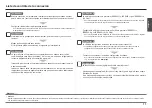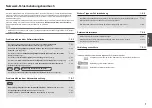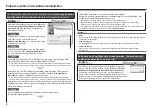
ENGLISH
6-A
5
4
2
3
1
F
J
H
I
G
K
6-B
7
1
2
M
L
N
When
WEP 40 bit
is selected in AirPort Utility (AirPort Admin Utility), select
64 bit
.
•
When
WEP (Transitional Security Network)
is selected in AirPort Utility, select
128
bit
.
•
WEP
Select
Authentication
(J), then click
OK
(K).
Go to .
Select
Key ID
(I).
Enter upper and lower case letters of the alphabet correctly when the network key is
5 or 13 characters. Letters are case sensitive.
Letters are not case sensitive if the network key is 10 or 26 characters (digits).
•
Select
Key Length
(G).
Select
ASCII
when the network key is 5 or 13 characters.
Select
Hex
when it is 10 or 26 characters (digits).
•
Select
Key Format
(H).
When using AirPort, select
1
in the screen.
Selecting other key numbers will disable the connection between the machine and
AirPort.
•
Enter the network key in
WEP Key
(F).
WPA/WPA2
Disable
When
WEP (Transitional Security Network)
is selected in AirPort Utility, select
AES(Secure Encryption)
.
•
Disable
WPA/WPA2
Enter the network key in
Passphrase
(L).
Enter upper and lower case letters of the alphabet correctly when the network key is
between 8 and 63 characters. Letters are case sensitive.
Letters are not case sensitive if the network key is 64 characters.
•
Select
Dynamic Encryption Type
(M), then click
OK
(N).
The
Manual Setup
screen returns. Click
Connect
.
After that, follow the on-screen instructions to proceed with settings.
•
Go to .
When the access point is set to operate in IEEE802.11n and IEEE802.11g with TKIP
set as an encryption standard, communication is established using IEEE802.11g.
•
When the access point is set to operate in IEEE802.11n, TKIP cannot be used.
Change the encryption type to something other than TKIP or change the standard to
something other than IEEE802.11n, then configure wireless LAN settings again.
•


